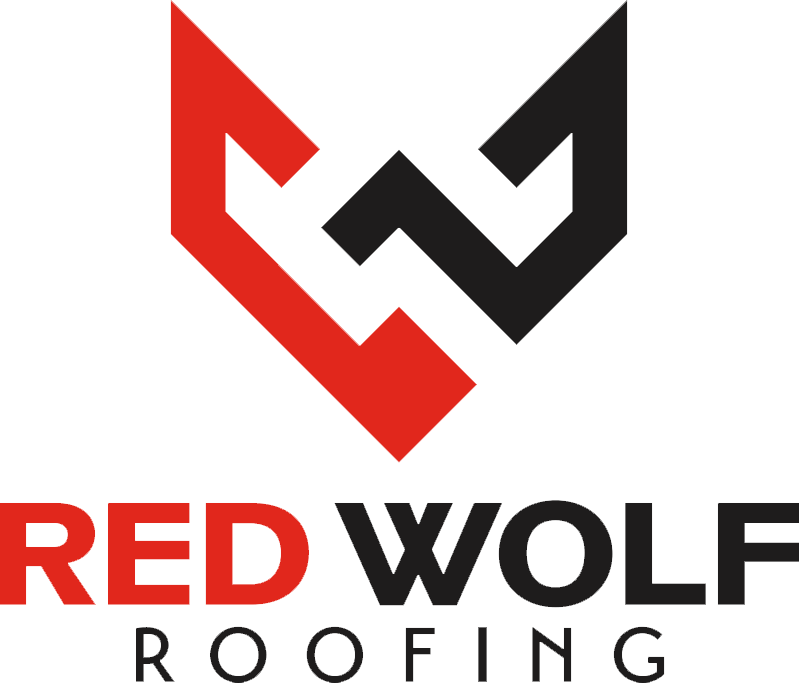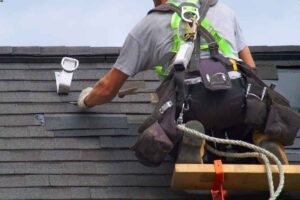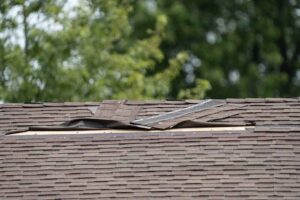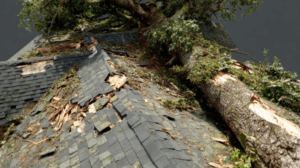North Carolina summers have a way of creeping up on you. One day, it’s a pleasant 75 degrees, and the next, it’s blazing hot, the kind of day where the pavement shimmers and the air feels thick enough to swim through. While you’re inside enjoying the A/C, your roof is taking the full brunt of that heat—and it’s not getting a break.
At Red Wolf Roofing, we see it every summer. Shingles that were perfectly fine in spring start to buckle, curl, or shed granules. The sun doesn’t just warm your roof—it cooks it, slowly and relentlessly. Asphalt shingles, like most materials, have a breaking point, and once they reach it, their protective layers start to fail.
The result? Leaks, premature aging, higher energy bills, and expensive repairs that could’ve been avoided with a little awareness and routine maintenance.
So, let’s talk about what really happens when the heat wins—when your asphalt shingles reach their limit—and what you can do to keep your roof standing strong through another Carolina summer.
The Science Behind Heat-Driven Roof Damage
To understand how heat damages your roof, it helps to picture what’s happening up there on a sunny day. The temperature outside might read 90°F, but your roof’s surface can easily hit 150°F or more under direct sunlight. That kind of heat pushes asphalt shingles beyond their comfort zone.
As shingles heat up, the asphalt softens. When they cool down at night, they contract again. Over and over, day after day, this expansion and contraction weakens the material, breaks down adhesive bonds, and loosens granules.
Those tiny granules—the speckled coating you see on each shingle—aren’t just for looks. They act as a shield, protecting the asphalt layer beneath from UV rays. Once they start coming loose, the shingle’s surface is exposed directly to sunlight, accelerating the breakdown.
In the Sandhills and across Central North Carolina, this cycle happens for months on end, especially on south- and west-facing slopes. Over time, even the highest-quality shingles can’t escape the effects of constant heat stress.
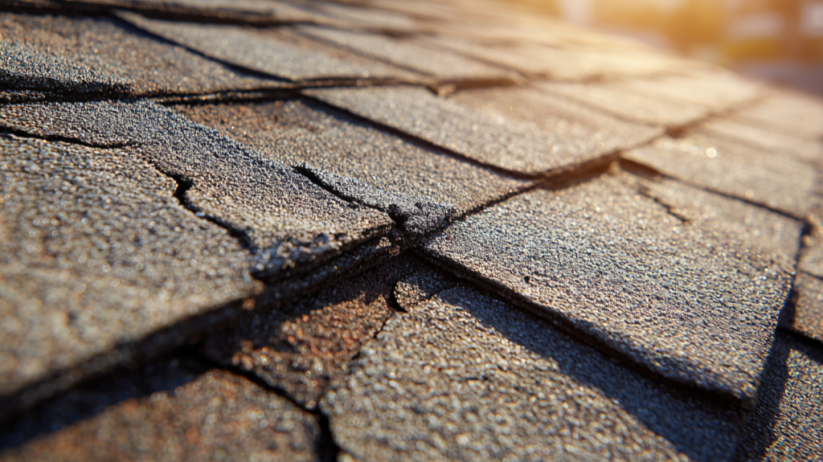
Signs Your Roof Is Reaching Its Heat Limit
You don’t need a ladder to spot heat damage. Most of the time, you can see it from the ground—or at least, you can feel its effects inside your home.
Here’s what to look for:
- Curling or cupping shingles: Edges start to lift as the asphalt loses flexibility and adhesives weaken.
- Brittle or cracked shingles: Extreme heat dries out the oils in asphalt, causing shingles to crack under even light pressure.
- Loose granules: Check your gutters or the ground near downspouts. A sandy buildup is a clear sign of granule loss.
- Dark streaks or shiny patches: These often appear where granules have already fallen away, leaving the asphalt exposed.
- Attic heat spikes: If your attic feels like a sauna, your roof may be trapping heat instead of releasing it through proper ventilation.
- Increased energy bills: A failing roof can’t reflect heat effectively, forcing your HVAC system to work harder.
If you’re seeing two or more of these signs, it’s a good idea to schedule a professional inspection. Heat damage doesn’t stop at the surface—it can spread into the decking and insulation below.
The Hidden Dangers of Prolonged Heat Exposure
Roof damage from heat isn’t just about looks—it’s about the slow, quiet deterioration that compromises your home’s entire weather protection system.
Here’s what can happen when heat exposure goes unchecked:
- Accelerated Aging: Asphalt shingles that should last 20–25 years may start failing in 10–12.
- Loss of Waterproofing: Cracks and missing granules allow rainwater to seep in, leading to leaks and wood rot.
- Attic Moisture Problems: Heat buildup causes condensation, which can warp decking and grow mold.
- Structural Stress: Overheated roofs expand and contract, stressing nails and joints, which can loosen entire sections over time.
- Interior Heat Transfer: Without an intact, reflective roof surface, your home absorbs more heat, pushing indoor temperatures up and energy efficiency down.
By the time leaks appear, most of the damage has already happened underneath. That’s why catching heat-related issues early is so important—it’s far easier (and cheaper) to address them before the structure beneath your shingles is compromised.
Why North Carolina Roofs Take the Hardest Hits
The Sandhills and central regions of North Carolina are especially rough on roofs. Our combination of high summer temperatures, humidity, and sudden storms creates an environment where roofing materials are under constant stress.
A few factors make our area particularly challenging:
- Intense UV exposure: Long hours of direct sunlight weaken shingles faster.
- High humidity: Moisture trapped in shingles expands under heat, accelerating material breakdown.
- Storm cycles: Summer storms cool roofs suddenly after extreme heat, causing rapid temperature shifts that make shingles crack or lift.
- Poor ventilation in older homes: Many attics in North Carolina lack proper airflow, trapping heat beneath the roof deck and baking shingles from below.
Even newer roofs can struggle if they’re not installed with the local climate in mind. That’s why choosing the right materials—and maintaining them properly—is key to long-term performance.
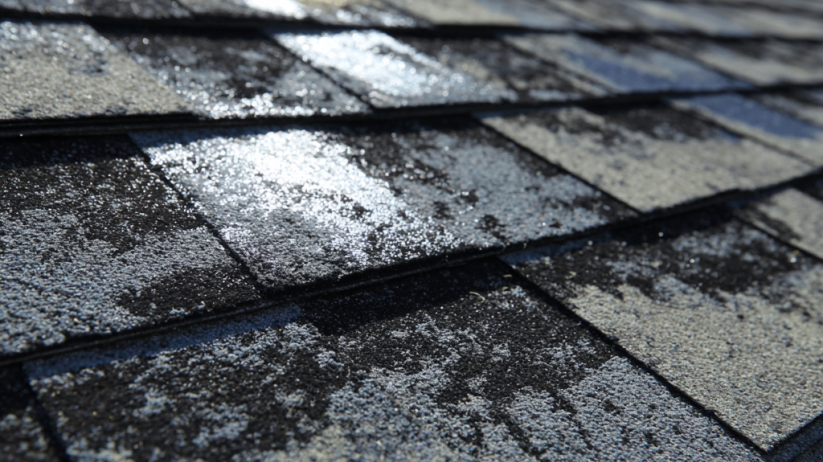
How to Protect Your Roof from Heat Damage
The good news is that heat damage isn’t inevitable. With proper care and smart planning, you can significantly extend the life of your asphalt shingle roof.
Here’s what we recommend:
- Schedule regular inspections: Have your roof checked at least once a year, ideally before and after summer. A professional can catch early signs of curling, granule loss, or ventilation issues.
- Improve attic ventilation: Proper airflow helps regulate roof temperature, preventing shingles from “baking” from the inside out. Ridge vents, soffit vents, and attic fans can make a big difference.
- Check your insulation: Good insulation reduces attic heat transfer, protecting both your roof and your energy bills.
- Keep your gutters clear: Clogged gutters trap heat and moisture around your roof’s edge, accelerating damage to shingles and decking.
- Trim overhanging branches: Shade is helpful, but branches rubbing against shingles can cause friction damage. Keep them trimmed at least three feet from the roofline.
- Consider lighter-colored or reflective shingles: These “cool roof” options reflect more sunlight, reducing surface temperature and slowing UV degradation.
- Don’t ignore early warning signs: A few loose granules might seem minor, but it’s your roof telling you it’s getting tired. Small repairs now prevent major expenses later.
Think of roof maintenance like a health checkup—regular attention keeps small issues from turning into life-threatening problems.
How We Help North Carolina Homeowners Stay Ahead of the Heat
At Red Wolf Roofing, we specialize in helping North Carolina homeowners navigate the unique challenges of our climate. Every inspection we perform looks beyond the surface. We don’t just check for obvious wear—we test for heat stress, ventilation issues, and structural weaknesses that other companies might miss.
When heat damage is detected, we don’t just recommend a quick fix. We tailor solutions to your home’s layout and location, whether that means replacing worn shingles with higher UV-resistant materials, improving attic airflow, or upgrading your roof to handle temperature swings more efficiently.
We’ve seen what happens when homeowners try to “wait out” heat damage—it never ends well. Our job is to make sure your roof stays strong, stable, and energy-efficient no matter how hot the summer gets.
When Replacement Becomes the Smartest Move
Sometimes, shingles simply reach the end of the road. If your roof is 15–20 years old and showing widespread heat damage, replacing it may be the most cost-effective choice. Modern roofing technology has come a long way—today’s asphalt shingles are more durable, reflective, and heat-resistant than ever before.
A roof replacement also gives us the chance to upgrade the entire system—ventilation, underlayment, flashing—so you get maximum performance and peace of mind. And with energy-efficient options now available, many homeowners see a noticeable drop in cooling costs after installation.
If you’re unsure whether your roof needs repairs or replacement, we can inspect it and give you an honest assessment—no pressure, just facts.
Beat the Heat Before It Beats Your Roof
Your roof might be built to handle the elements, but even the toughest shingles have their limits. In North Carolina’s hot, humid climate, heat damage isn’t just possible—it’s inevitable if you ignore the warning signs.
The good news is, you don’t have to wait for leaks or sky-high energy bills to know your roof needs attention. A simple inspection can reveal whether your shingles are starting to crack, curl, or lose granules from heat stress. From there, we’ll help you make the right call for your home, whether that’s a small repair, ventilation upgrade, or full replacement.
At Red Wolf Roofing, we don’t just fix roofs—we protect homes. Contact us today to schedule your roof inspection and get ahead of the summer heat. Because when the temperature rises, your roof shouldn’t have to sweat it out alone.
